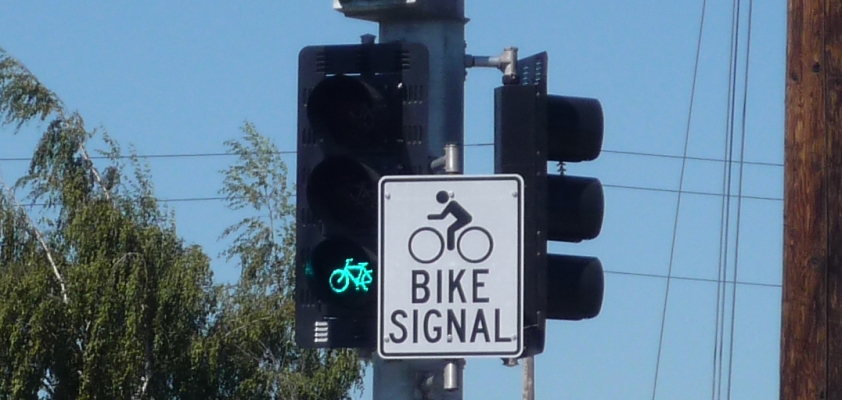AASHTO places bike signals project in Sweet Sixteen

A project led by Portland State University researchers Chris Monsere and Miguel Figliozzi has been nationally recognized as one of sixteen high value research projects by the American Association of State Highway and Transportation Officials (AASHTO).
Each year at its annual meeting, AASHTO's Research Advisory Committee selects four projects from each of its four regions to form a "Sweet Sixteen" group of important and influential projects.
The project, “Operational Guidance for Bicycle-Specific Traffic Signals,” reviewed the current state of practice for bicycle signals and evaluated cyclist performance characteristics at intersections. The research has been used to inform an FHWA Interim Approval for bicycle signals.
Bike signals are beginning to be common in major cities throughout the U.S., with some engineering guidance available from the California Manual on Uniform Traffic Control Devices, the NACTO Urban Bikeway Design Guide and AASHTO.
Where guidelines leave room for experimentation, each jurisdiction uses its own approach. The first phase of this research synthesized the types of designs being implemented around the country, collecting data on things like the size of the lens, the use of bicycle insignia, the mounting location and how the signal head is designated as being for cyclists only.
In the second phase, researchers analyzed video data to compare intersections with and without bicycle-specific signals. They measured reaction times, crossing times, waiting times, gap acceptance and saturation flow rates. Cyclists’ compliance with signalized traffic control was also evaluated.
As part of this research, the investigators developed a general methodology to estimate bicyclists’ acceleration and speed for traffic-signal timing applications. Their process demonstrates how field-collected observations from a basic video setup can be used to successfully estimate design acceleration and speed values using equations of motion.
Based on the analysis, AASHTO's current default acceleration rates were found to be conservative. Nearly every cyclist observed in this research attained much higher average accelerations than the AASHTO default of 1.5 feet per second.
The analysis also suggests that there is a performance difference between commuters and recreational riders that merits adjustments to the default values.
One important finding from the compliance analysis revealed that 90% of cyclists using a bike lane stop at red lights. This compliance rate remained the same whether the intersection had a bike signal or didn't have one.
The project, co-sponsored by NITC and the Oregon DOT, has been widely cited and the research is instrumental in beginning to standardize the use and design of bicycle signals.
For more details about the research findings, visit the project page or download the final report.
